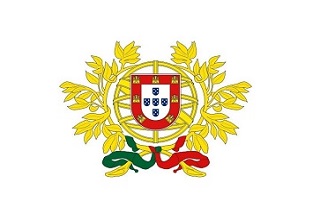Regarding the Inspection and Quarantine Requirements for Dairy Products from South Africa to China
I. Inspection and quarantine basis
(I) "China's Entry and Exit Animal and Plant Quarantine Law" and its implementing regulations, "China's Import and Export Commodity Inspection Law" and its implementing regulations, "China Food Safety Law" and its implementing regulations.
(II) "China Import and Export Food Safety Management Measures" and "China Import and Export Food Overseas Production Enterprise Registration Management Regulations".
(III) "China Customs and South African Ministry of Agriculture on Inspection and Quarantine and Hygiene Requirements for South African Dairy Products Exported to China Protocol".
(IV) "Customs Announcement on Clarifying Relevant Requirements for Inspection and Quarantine of Imported Dairy Products".
II. Products allowed to be imported
Dairy products exported to China refer to foods originating in South Africa and processed with cow's milk as the main raw material, including milk powder, fermented milk, cream, cream, pasteurized milk, whey powder, cheese and processed cheese, etc.
III. Requirements for production enterprises
Dairy production enterprises exported to China must be approved or registered by South African officials, under the supervision of South African officials and comply with the relevant animal health and public health requirements of China and South Africa.
According to the "Food Safety Law of China" and the "Regulations on the Registration and Administration of Overseas Production Enterprises of Imported Food in China", production enterprises exporting dairy products to China must be registered in China, and products produced by unregistered enterprises shall not be exported to China.
IV. Requirements for dairy animals providing raw milk
Dairy animals providing raw milk for dairy products exported to China must meet the following requirements:
(I) They come from farms that meet the following conditions:
1. The farm's foot-and-mouth disease quarantine restrictions have been lifted for at least 2 months.
2. The farm has not been subject to quarantine restrictions due to anthrax in the past 12 months.
3. No brucellosis, bovine tuberculosis, para tuberculosis, rinderpest, rift valley fever, or contagious bovine pleuropneumonia have been found on the dairy farm.
4. The farm is supervised by the South African Department of Agriculture.
5. Comply with the relevant provisions of the WOAH Terrestrial Animal Code, and animal disease outbreaks should be continuously monitored and reported to WOAH.
(ii) Animals have not been fed feeds that are prohibited for feeding to animals in South Africa and China.
(iii) The South African Department of Agriculture has formulated the South African National Residue Monitoring Plan and requires companies to test raw milk in accordance with the relevant laws and regulations of South Africa and the provisions of the Chinese National Food Safety Standard for Raw Milk (GB19301).
(iv) While accepting the monitoring of the South African National Residue Monitoring Plan, production companies should also ensure that dairy products exported to China comply with relevant South African regulations and China's national food safety standards.
(v) According to the South African National Residue Monitoring Plan and the results of raw milk testing, the residues of veterinary drugs, pesticides and other toxic and hazardous substances in dairy products exported to China do not exceed the maximum limits set by Chinese standards.
V. Quarantine Approval Requirements
Pasteurized milk exported from South Africa to China should be subject to quarantine approval in advance and obtain the "Entry Animal and Plant Quarantine Permit".
VI. Certificate Requirements
Dairy products exported to China should be accompanied by a veterinary health certificate issued by the South African authorities.
VII. Food Safety Requirements
(I) Dairy products exported to China shall comply with the provisions of South African and Chinese laws and regulations and China's national food safety standards.
(II) All raw milk ingredients for dairy products exported to China come from South Africa.
(III) The products are processed using one of the following procedures:
1. A sterilization procedure with a minimum temperature of 132°C for at least 1 second (Ultra-High Temperature UHT);
2. If the pH of the milk is lower than 7.0, a sterilization procedure with a minimum temperature of 72°C for at least 15 seconds (High Temperature-Instantaneous Pasteurization HTST);
3. If the pH of the milk is 7.0 or above, the HTST procedure is used twice.
VIII. Packaging and Labeling Requirements
Dairy products exported to China must be packaged with new materials that meet Chinese standards. The outer packaging must indicate the specifications, origin (specific to the state/province/city), destination, product name, weight, manufacturer name, registration number, production batch number, storage conditions, production date and shelf life in Chinese and English.
The inner packaging must comply with relevant Chinese regulations, and the label should indicate the country of origin, product name, manufacturer name, address and contact information, registration number, production batch number, production date and shelf life.
IX. Storage and transportation requirements
The entire process of dairy products exported to China, from packaging, storage to transportation, should meet sanitary conditions to prevent contamination by toxic and hazardous substances. After the goods are loaded into the container, they should be sealed, and the seal number must be indicated in the veterinary health certificate. The packaging must not be opened or replaced during transportation.
GACC
Sep. 30, 2024



